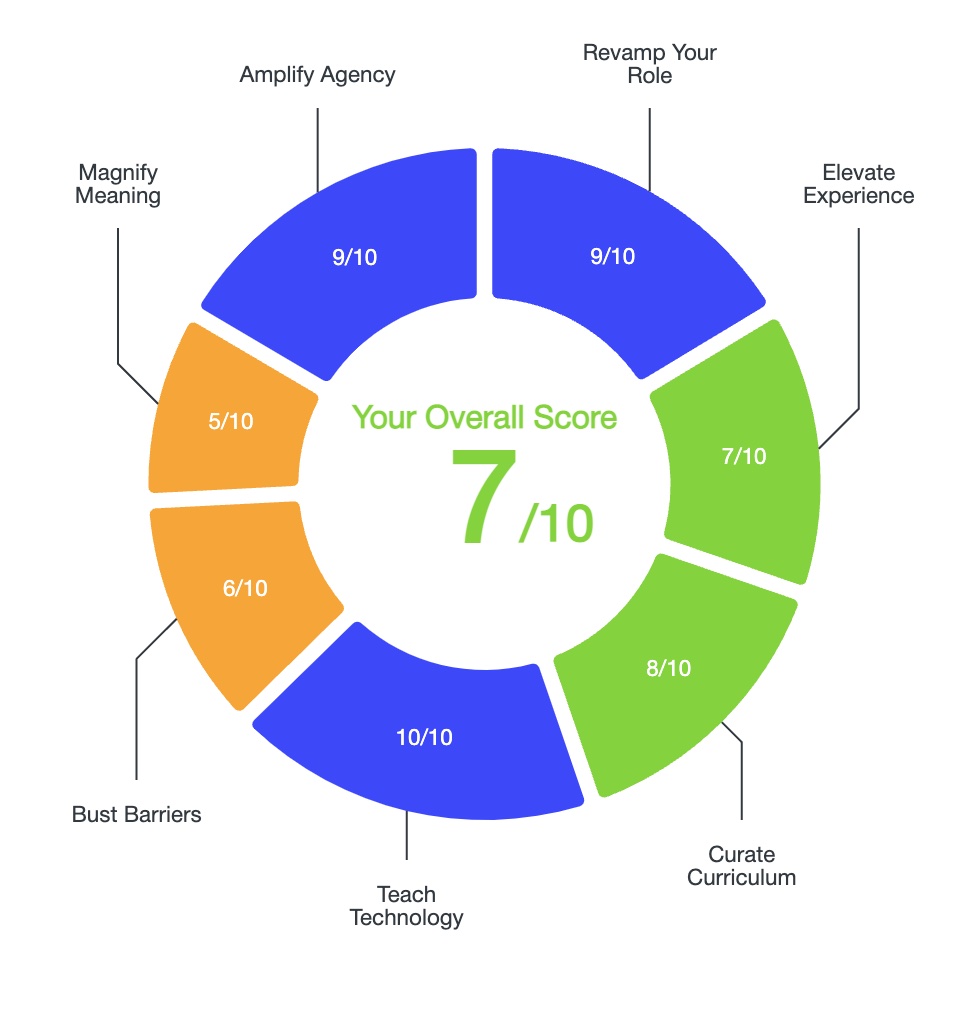Edpuzzle is an essential (and free!) program that allows teachers to transform video content from a passive to interactive experience for students. I strongly believe Edpuzzle should be a part of all educators’ toolkits, particularly when teaching remotely. With Edpuzzle you can easily create custom video-based lessons that will give your students immediate feedback about their understanding, as well as provide you with a window into what your students understand, or don’t, even when you can’t be with them in person.
1. Why Use Edpuzzle?
Videos have become a standard way for teachers to provide students with multiple ways of accessing information, to reinforce content and/or academic skills, as well as help students visualize what they are learning.
Although we have a developed an array of tools to help monitor student understanding of written text, few tools exist to achieve the same goal with video content. If you’re like me, you’ve likely had students watch an entire video and then take notes, or answer questions after the fact, but how much of the content did students actually retain? Did students understand the advanced vocabulary word that was used smack in the middle of the video? Are student really grasping the key concepts from the video? Without a tool like Edpuzzle, it’s hard to know.
Edpuzzle fills a crucial need by allowing teachers to import video content and then add custom edits, voiceovers, and most importantly, custom comprehension questions. As long as you turn on “prevent skipping” in the settings, students must answer the questions to proceed through the video, and after they answer a question, will be provided with immediate feedback about how they responded.
Whole class and individual student reports in Edpuzzle help teachers better understand where breakdowns in understanding are taking place, a feature particularly relevant to remote learning, when it has become even more essential for teachers to utilize tools that make student thinking visible.
2. How & Why to Create Student Accounts
Although you can find an Edpuzzle video, copy the link, and share it with your students, I don’t recommend it.
It’s a far superior experience to set up classes within Edpuzzle, and you can do so with a free account.
Once you’ve synced with your Google Classroom (or manually set up a class), you’ll be able to assign videos to your individual classes, as well as view analytics reports with breakdowns of student performance on the embedded questions. Without the analytics tools, you’ll be left in the dark nearly as much as you would be without Edpuzzle.
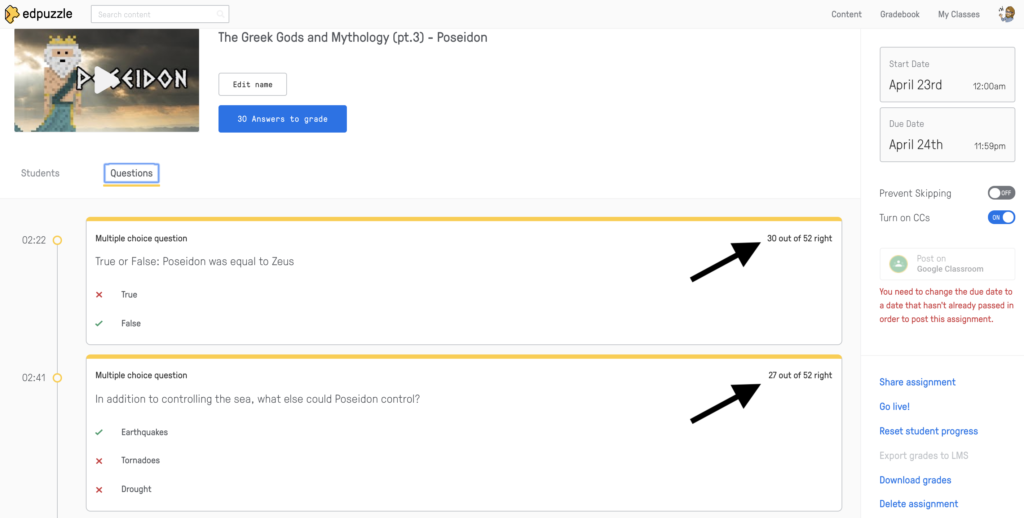
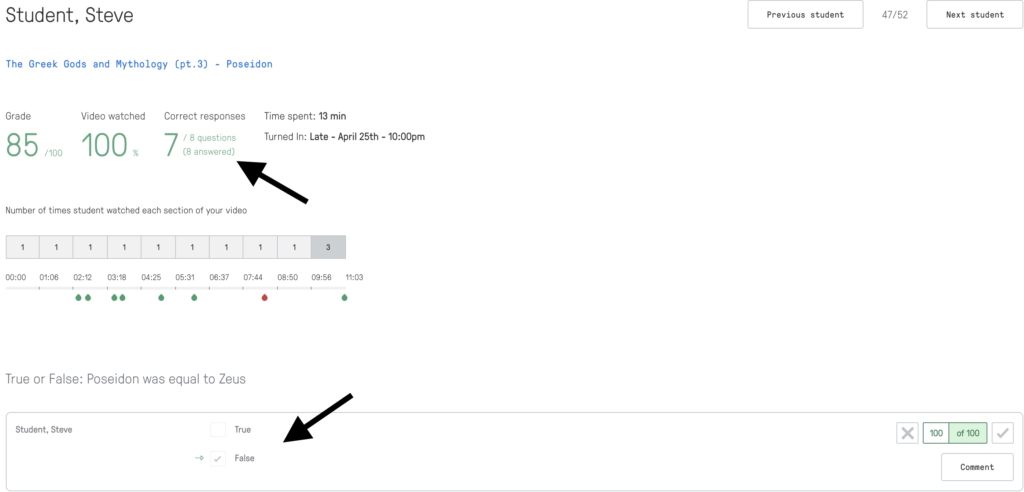
In order to set up your classes, first navigate to the My Classes tab in Edpuzzle, and then choose Add New Class. You’ll be given the option to manually create a class, or sync your account with Google Classroom. If you’re a Google Classroom user, you just need to sign in to your account, and you’ll be able to import any of your Google Classrooms into Edpuzzle.
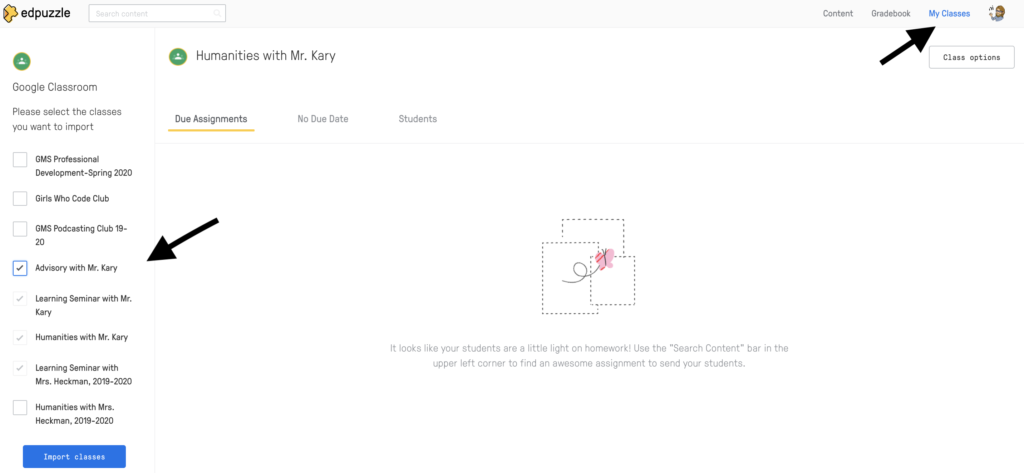
3. Choosing Videos to Assign
Prior to adding comprehension questions to a video, you’ll first need to locate a video that best suits the needs of the assignment.
First, navigate to the My Content tab, and select Add Content. On the drop down menu, select Create New Content.
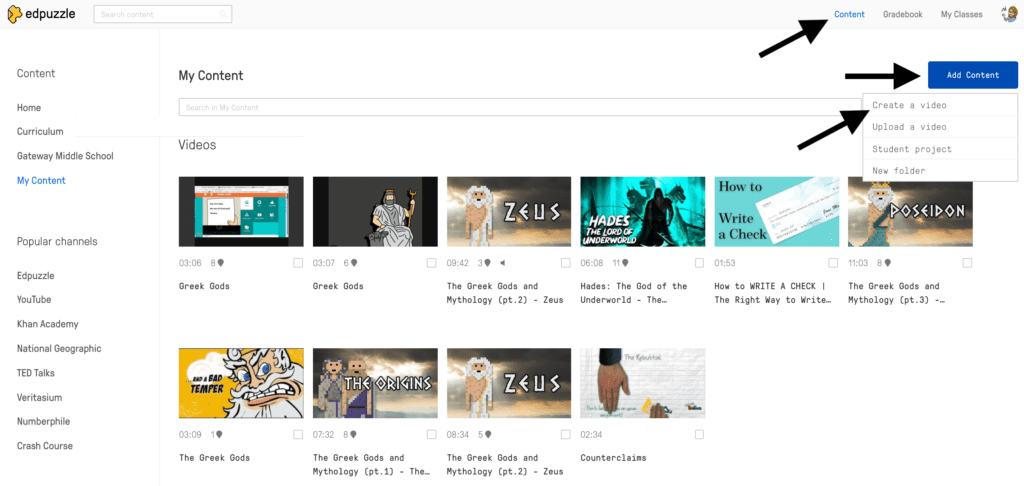
Here, you have several options for finding the right video for your assignment.
If you already know the YouTube url for a video you want to assign, just copy and paste the url into the search box and the video will show up.
If you haven’t already chosen a video, you can use Edpuzzle’s internal search function to look for different types of videos:
- Pre-created Edpuzzle videos
- Videos from integrated educational channels
- YouTube Videos
Best Option – Pre-Created Edpuzzle Videos: The benefit of using videos that have already been created in Edpuzzle is that they often also have pre-created questions and answers that you can edit and use for your own assignment. The number next to the small icon underneath a pre-created video indicates how many questions have already been set up for this video. If the questions align to what you intend students to get out of watching the video, this feature can be a huge time saver versus writing your own questions and answers.

Next best option – Search within an educational channel: The next best thing to finding a pre-created Edpuzzle assignment is to find a video on one of the educational channels that has a built-in integration with Edpuzzle (Khan Academy, National Geographic, TED Talks, Veritasium, Numberphile, and Crash Course).
Why? All of these channels produce high quality educational content that you don’t have to vet for accurate information or inappropriate content.
Last option – YouTube search: There’s nothing wrong with doing an open YouTube search for videos (I do it all the time), but finding high quality educational videos will take more work on your part. Unless the video comes from a reputable educational channel like the ones mentioned above, you’ll have to vet the content for accuracy and appropriateness prior to assigning it to your students. Luckily even if there is a section in a YouTube video that might not be relevant or appropriate for your students, you can manually cut that part out when creating your assignment in Edpuzzle.
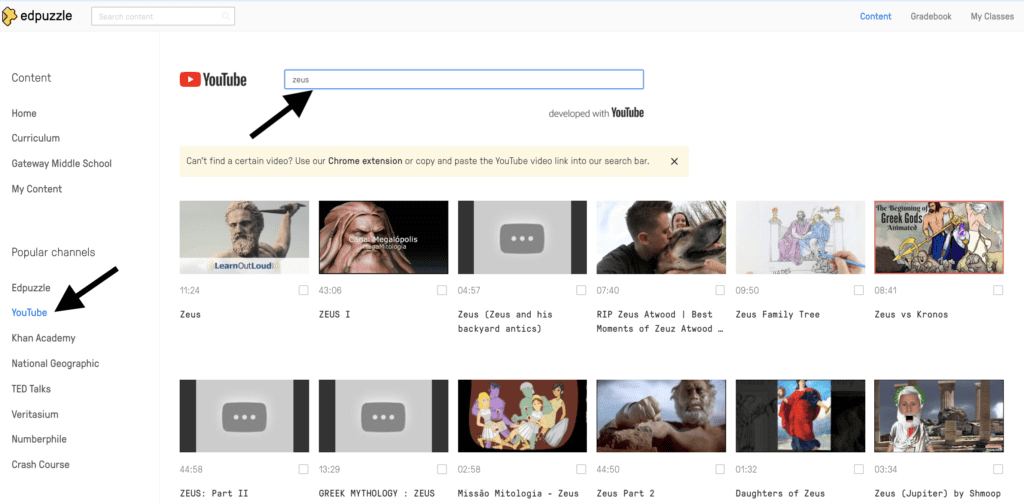
4. Customizing Videos in Edpuzzle
Once you’ve chosen a video, there are three ways to customize it in Edpuzzle: cut the video, add a voiceover to the video, and add questions to the video.
Cutting the video: There are several reasons why you might want to cut sections of the video prior to assigning it to students.
First, the video might simply be too long, and you might want to make it shorter and more digestible for students.
Next, you might need to cut inappropriate sections from the video. Since I teach Greek Mythology, and have my students watch videos about Greek mythology, I often have to cut small sections of the videos that address age-inappropriate topics.
Lastly, you might want to cut intro or outro scenes, particularly if they are mostly comprised of the creator asking for viewers to subscribe and like their channel.
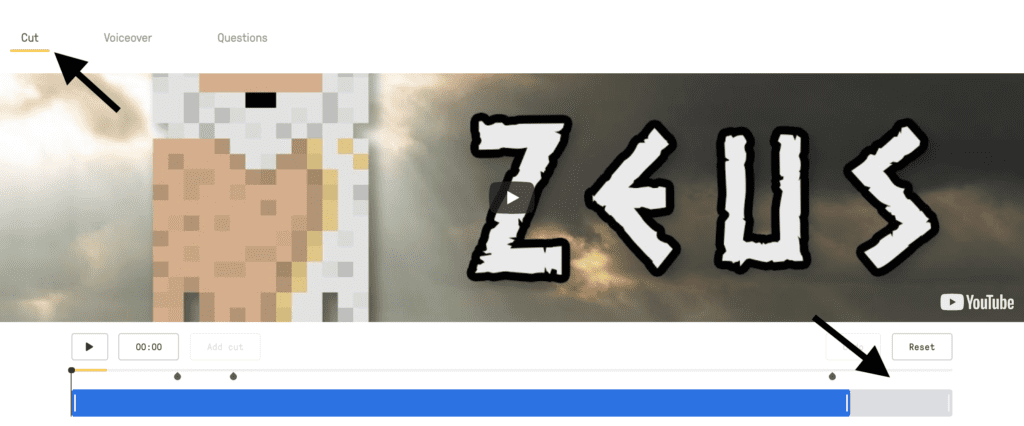
Adding a custom voiceover: Edpuzzle gives you the option of replacing the audio in a video with your own voiceover. Note that using this feature won’t pause the video. If you want to stop the video and add a voiceover, you’ll want to add a “note” (more on this below).
One useful way to use voiceovers is to help frame a video within the context of a larger project, or a specific learning target. If, for example, the objective of a student watching a biographical video is to analyze character traits, your voice over could emphasize that learning target. Or, you might use a voiceover to remind students that they are looking for specific answers to questions for a research project they are working on.
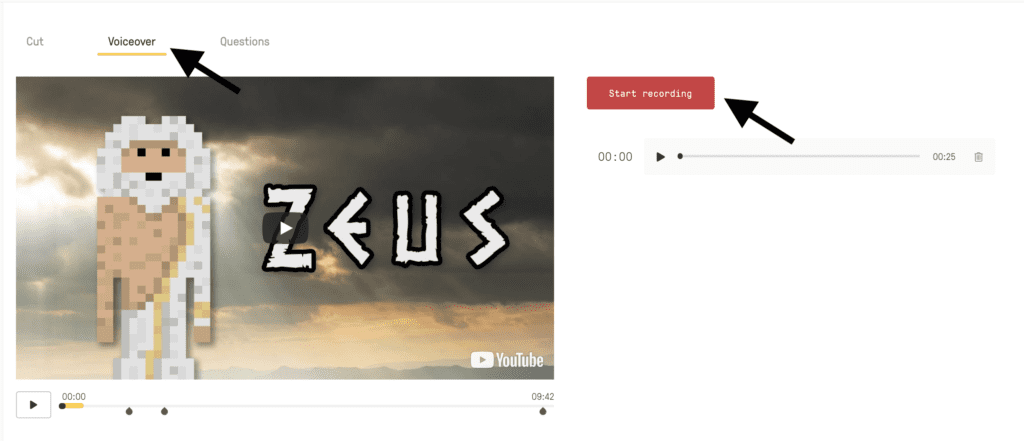
Adding Questions: By far the most important way to use Edpuzzle is to add questions to the video assignment. Adding questions helps chunk up the video for students, as well as helps them monitor their own understanding of what they just watched.
If students get a question and are unsure of the answer, they have the option of rewatching the previous segment of the video, reinforcing the reading comprehension concept of self-monitoring one’s own understanding.
In Edpuzzle, there are three types of questions you can add to a video: Multiple Choice, Notes, and Open-Ended Questions.
Multiple Choice Questions: You might choose to ask students a multiple choice question in order to monitor their understanding of the content covered in the video, or you might want them to apply a specific academic skill to what they just learned. For example, you could ask a “right there” question such as, “According to Greek Myth, where was Zeus born?” Or you could ask students an inferential question such as, “Based on what you’ve learned so far, what can you infer about Zeus’s character.” When I make Edpuzzle videos, I try to include a variety of question types.
Once you come up with your question, you’ll also need to come up with correct and incorrect answer choices. I always start with the correct answer and then write the incorrect answers. For example, for the above question, “According to Greek Myth, where was Zeus born?” I would create the following answer choices:
A. In a cave on the island of Crete (correct)
B. In a temple in Athens (incorrect)
C. In a small village in Sparta (incorrect)
Note that in order to make the assessment as authentic as possible, I try to stay away from implausible, nonsense answer choices.
While students are watching the video, the question will pop up, and they will have to answer it in order to proceed. Once they submit their answer, they will be given immediate feedback regarding whether or not their choice was correct or not.
Pro tip! Be sure to double-check that you have selected the green check for the correct answer and the red x for incorrect answers. It’s embarrassing to get student emails saying telling you that the answer choices were wrong!
Extension: In order to make the questions more challenging, have them select all the correct answers that apply, rather than just one correct answer.
Adding a Note: Although this feature is located in the “Questions” section of Edpuzzle’s video editor, adding a note doesn’t involve students interacting with what you’ve written.
You might choose to add note to highlight a particular section of a video. You might want to further elaborate on something that comes up in a video, or provide a short explanation of a vocabulary term that is used.
When creating a note, you’ll have the option of either writing the note, or recording yourself speaking.
Open-Ended Questions: Open-ended questions are question you write that don’t include pre-determined answer choices. For example, toward the end of a video, I often to ask my students to write a brief summary of what they just learned.
Keep in mind that if you choose to include open-ended questions, you’ll have to grade them manually after students have submitted their assignment.
5. Whole Class & Individual Reports
After students have watched the video and answered all the questions, you’ll be able to see data about how your entire class performed on specific questions, as well as data about specific students.
The whole class report is beneficial for understanding patterns of misunderstanding so that you can address those misunderstandings with your whole group.

On the other hand, individual reports will give you a better sense of how specific students performed on the assigned questions, and you can even leave students feedback on their individual responses.
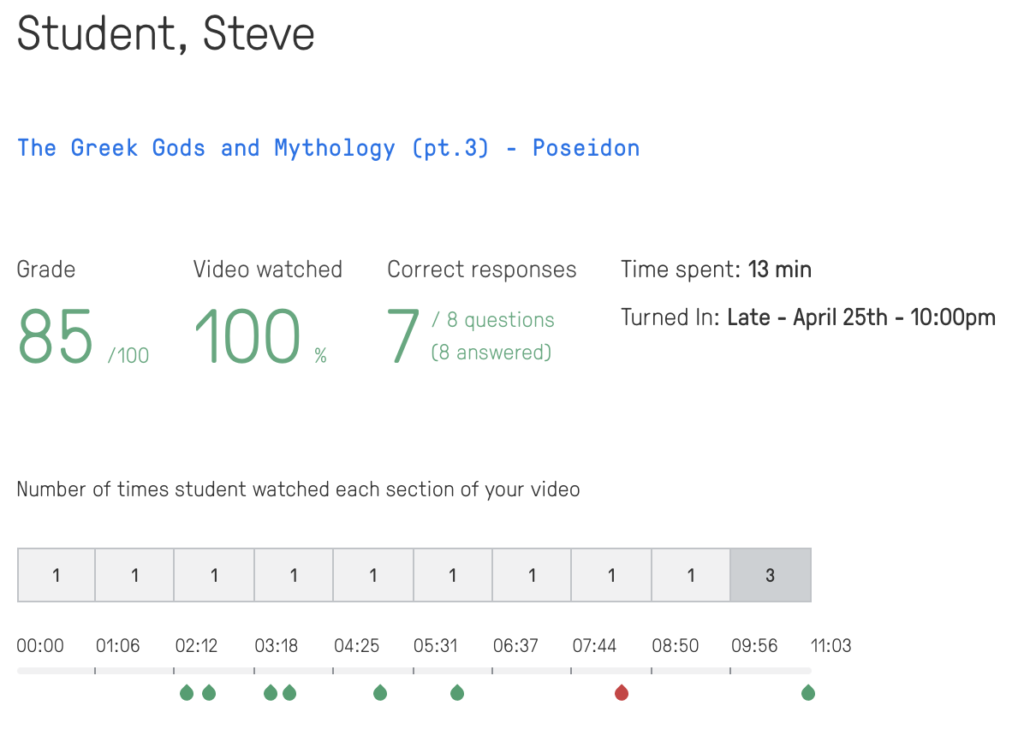
Conclusion & Resources
Regardless of whether you are teaching in the same room as your students, or teaching them remotely, Edpuzzle is an essential tool for educators. Edpuzzle is clear example of how technology can be used to improve learning experiences for students.
For additional strategies for how to use technology to personalize learning, increase engagement, foster creativity, and more, click here:
How to Use Education Technology: The Ultimate Guide
And to read more about why I believe technology must be a central part of public education today, click here:
Why Education Technology?: The Ultimate Guide
Interested in the software I use to create my videos? Check out the links below! Many of these products offer a free trial to start and just clicking on the link helps to support The New EdTech Classroom!
Screenflow is a dynamic, intuitive video editing software that I use to create all of my YouTube videos. They’re currently offering a free trial! Get more details here.
I use Adobe Spark Post to design all of my YouTube thumbnails, as well as all my social media graphics. More information here.
If you’re interested in creating a website, these are a couple of programs I personally use and highly recommend: Bluehost is a web host that offers a professional platform for your website. You can check them out here.
Elementor is a powerful tool that helps with clean visual design for your website as well as marketing to further your website’s influence. More details here.

